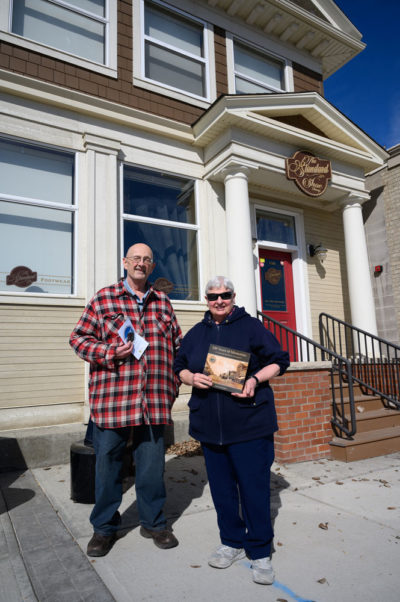Celebrate Strathmore’s history
By Sean Feagan, Local Journalism Initiative Reporter

Sean Feagan Photo
Strathmore Day establishes a new yearly signature event for the town, explained Geoff Person, the town’s communications manager.
“Our community is fortunate to already host signature events like the Strathmore Stampede, and adding a new one at the beginning of spring provides new opportunities to celebrate our local history and culture,” he said, adding the event generates a new opportunity to bring the community together and attract visitors to the town.
“One of the most remarkable things we’ve seen over the past year is how quickly the community pulled together to get through COVID-19,” said Person. “As we started drafting a plan for future events, we wanted an event that celebrated this community feeling and how Strathmore has a deep history of working together to overcome challenges. The more that we research about the date, the more we felt that this event would really resonate with the community.”
Physical celebrations are sidelined this year because of the COVID-19 pandemic. For now, the town is working to raise awareness. “There has been a great reaction on social media, and we’re looking forward to growing it over the next year,” said Person.
But the town is planning for a more prominent in-person celebration next year. Staff have been recording ideas from each of Strathmore’s past areas while communicating the town’s history, said Person.
“One idea is to engage some of the community’s groups to bring back some of these past events with a new twist,” he said. “We want to see a real grassroots approach to growing this event.”
Awakening the past
The town looks to build upon the work of the Western District Historical Society (WDHS), a charity working since 2015 to preserve and promote Strathmore’s past.
The group’s first effort was an attempt to preserve the Anglican Church located on Third Street which ultimately proved unsuccessful. But it created new appreciation for Strathmore’s history and the need to protect it, explained Lynne Fair, WDHS vice-president.
“That’s what really kicked us off to give us a big boost of enthusiasm,” said Fair. “In the five or six years we’ve been going, we’ve actually made a lot of progress.”
This led the way for the creation of three digital historical walking tours of Strathmore: The Canadian Pacific Railway: How a Railway Shaped Strathmore; Life in Strathmore: The Village that Moved; and Strathmore at War.
These tours, available on mobile devices via the On This Spot app, compare modern and historic photographs of significant spots in town.
More recently, the WDHS worked to install historic display cases at the Royal Canadian Legion Strathmore, Strathmore Municipal Library and Wheatland County office, each with a different focus.
The WDHS also holds events at the historic Klaiber barn, located south of Hwy. 1, where once was sited the renowned Canadian Pacific Railway (CPR) Demonstration Farm. Another venture is the sunflower field there, offering residents a chance to visit that site.
Strathmore’s unique and disappearing history draws the WDHS to the past, said Tom Saddler, board member. “In many ways, we’ve lost touch,” he said. “What we see now is nothing like what was here 50 or 100 years ago, when the CPR built the whole town – it was a railway town.”
While much of Strathmore’s history – from its early settlers to its first buildings – have disappeared, there is still much to discover, added Sadler.
“It’s kind of a curiosity, being a whole different era,” he said. “If people get any interest at all, there’s all sorts of exciting things to discover about Strathmore – it really has an amazing history.”
Exploring Strathmore’s past can show people how rural Alberta was the backbone of the province’s growth and development, said Fair. “If it wasn’t for the railway on all of these small towns and the farming areas along the way – and the people that they brought here – even Calgary wouldn’t be what it is now.”
But history also shows how fast things can change, said Sadler. “Just little over one hundred years ago, it was all just native Prairie,” he said. “Looking at the past can make people realize things have not always been as they are now; they’ve changed so much in the last hundred years, so they can expect the same in the next hundred.
“If anything, the rate of change is accelerating.”
There are two major books describing Strathmore’s history: Strathmore, The Village That Moved (1986) and 100 Years of Memories: Celebrating Strathmore’s Centennial. This latter book is also available for purchase through WDHS, as are booklets describing some of Strathmore’s most notable historic sites. As a charity, WDHS accepts new members and donations.
